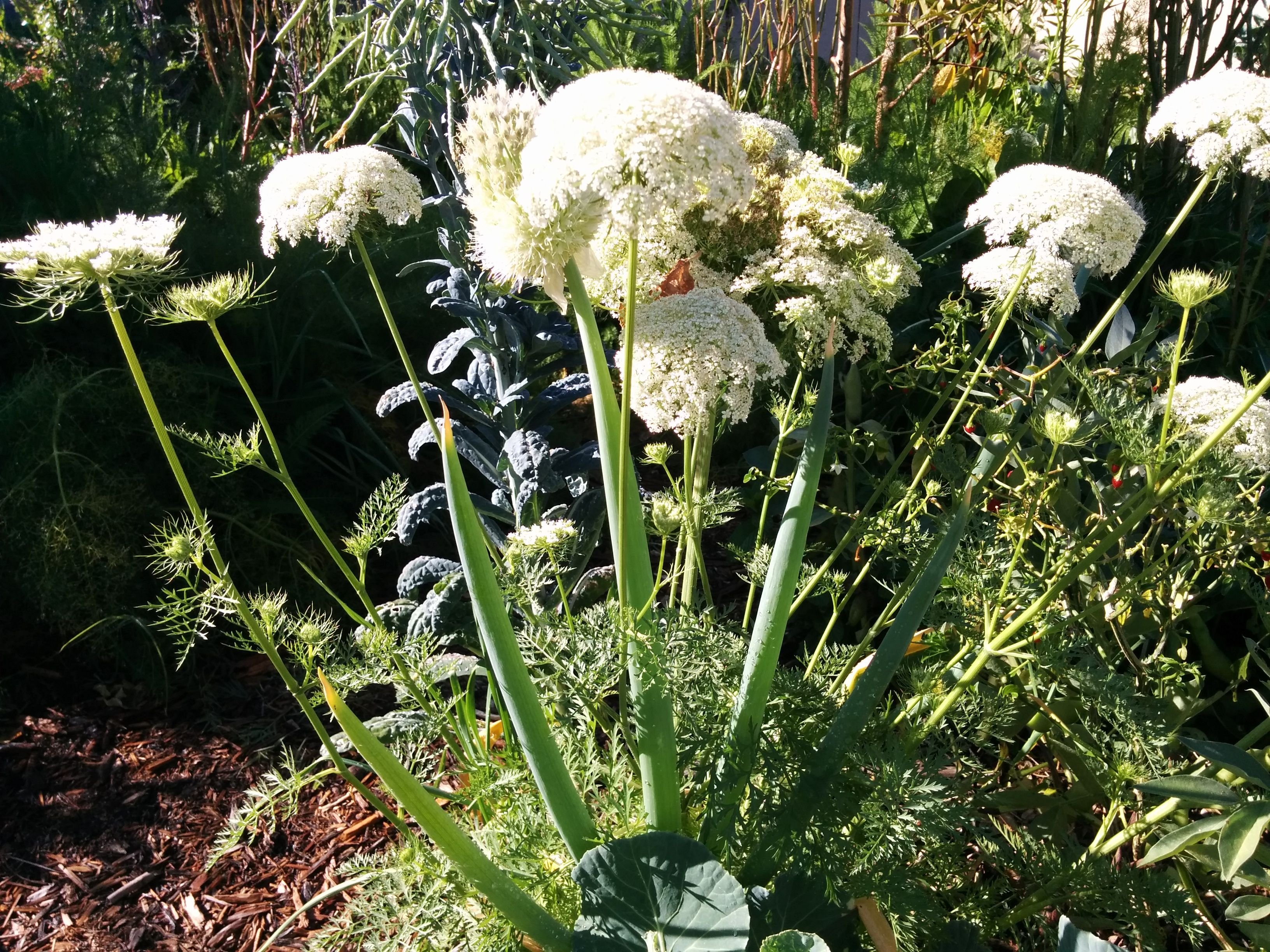This garden was a 2 year labor of love! I put my heart and soul into this garden nearly every day and it transformed me into a more loving being and eventually changed the trajectory of my life toward homesteading and living and embracing Permaculture.
In the time span of the two years that I tended this garden I went from wanting to grow a few veggies on the side to growing a young suburban food forest.
In this post I will share my design considerations, challenges, some pitfalls and the beauty of letting nature take over while providing an abundance of food.
I am excited to share this garden with you during a transition time in my life... @idyllwild and I are about to move and start a new garden in 2 weeks. Reviewing this garden is helping prepare me for the next one!
If you are curious you can also read my 1st suburban garden tour: Part 1, Part 2, Part 3, Part 4
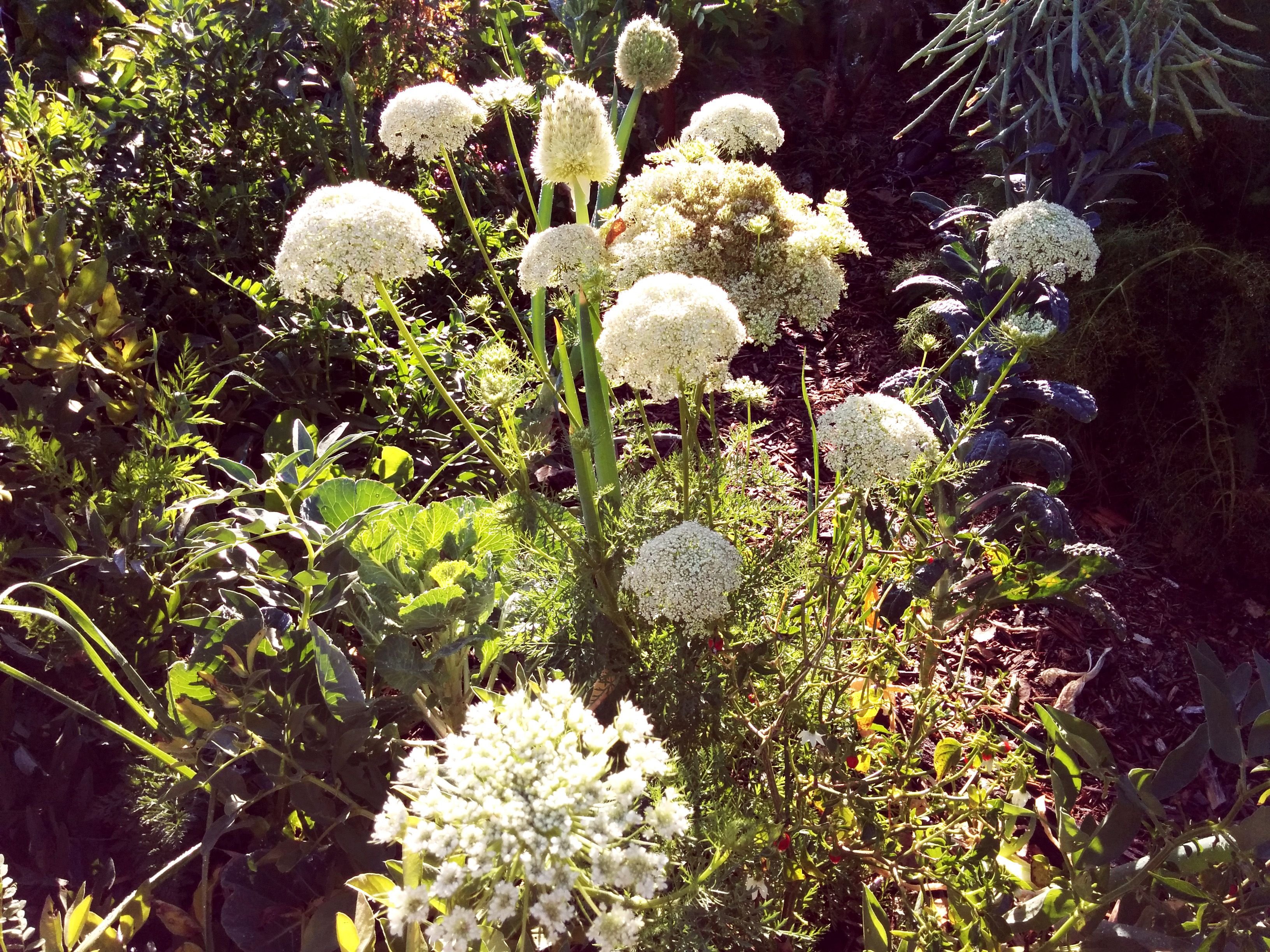
This is what nature gave me: a garden of Eden.
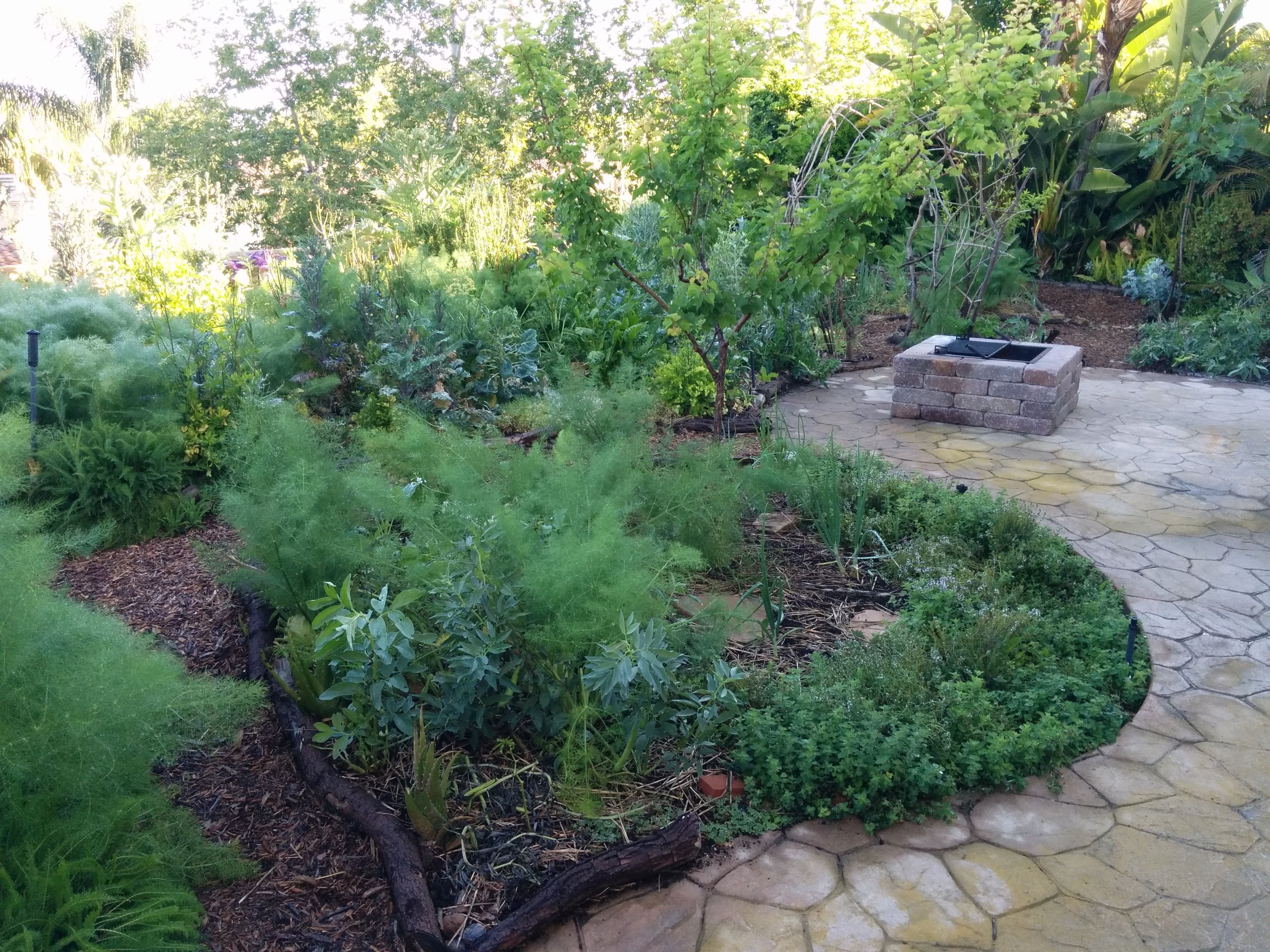
This is the closest thing that I have to a before picture.
While some landscaping work had already started you can clearly see that this started as a typical suburban backyard: mostly grass with some hedges and a few various low maintenance perennial plants/trees around the sides.
Initially there wasn't a garden plan
The backyard was approximately 25' x 60' for 1500 sq ft of growing space, give or take. That is pretty huge compared to the 300 sq ft garden I had just left behind in my 1st garden.
I knew right off the bat I wanted fruit trees in the ground ASAP so they could start growing.
I knew the fruit trees would eventually provide an abundance of food, shade the house and create microclimates in the garden for plants to escape the summertime heat.
I found a nursery that was recommended and purchased 9 fruit trees and sprinkled them throughout the lawn. I moved them around in pots before deciding where to place them. My criteria for placement was something like:
- Somewhat evenly spaced around the yard so that they have room to grow without competing too much with eachother
- Not too close to the fence or the neighbors
- Not too close to the patio
- Keep some view (thinking about 10-20 years from now when the trees are more grown)
- Deciduous trees are placed closer to the house so they are more open in the winter for more sun exposure and shade in the summer.
So I planted those 9 trees with some compost! Here you can see 5 of the young trees just planted.
I knew I wanted to grow veggies.
There were two side beds on the borders of the lawns that had some shrubs and plants that I didn't particularly care for, like the spider plant, jade and others. I figured they had been dropping a lot of leaves and self mulching and if I took those up there would be some good top soil for planting veggies
And I could keep the grass untouched.
So that's what I did. After taking out the vegetation from the border beds I brought in some cheap municipal compost, worked it into the soil and planted some various veggie seeds.
With some water the sprouted pretty quick! In this next photo you can see the two border beds where veggies were planted.
I had peppers, squash, tomatoes, carrots, various herbs and more sprouting and starting to grow.
And then... disaster!
Suddenly all these little sprouts stopped growing. And they didn't grow. And they didn't grow. And the leaves started turning yellow. After weeks of this behavior, or lack of I was getting frustrated and very discouraged.
Why weren't my plants growing! I was determined to do things organically and not resort to miracle grow! What a big shock, coming from a garden of abundant veggie growth to abysmal performance.
Right around this time @idyllwild was learning about Permaculture at her workplace
She came home inspired and shared what she learned about plant polycultures called "guilds" which are like companion planting on steroids and I got super excited. Then she ended up on a tour of a Permaculture garden run by a Permaculturalist who apparently was a real life plant wizard!
I suggested to @idyllwild... let's hire her to come and consult us on our garden and tell us what I am doing wrong!
Long story short... the Permaculturalist came out and spent an hour with us. The whole hour my jaw had dropped and we were furiously scratching out notes. I learned that I needed to nurture the soil life and not the plants, that I needed massive amounts of mulch and as much organic matter as possible, I learned more about plant guilds.
It was the best money I ever spent. In one hour I received a crash course in gardening and suburban #Permaculture. As a newbie to gardening with little book knowledge this was invaluable.
Shortly thereafter, on her recommendation I purchased Gaia's Garden by Toby Hemenway and read it promptly. My outlook on my garden had flipped and my excitement returned! (Every gardener must read this book!)
Looking at the garden through a newfound lens my vision shifted from having a lawn with some veggies on the side to...
A backyard food forest!
I was immediately in action making several batches of compost tea a week and distributing it the soil and leafs of veggies and trees to start building soil microbe populations. I would keep this up more or less regularly throughout the year with emphasis during spring and fall.
Then came the garden design.
The circles are trees, the curved lines wrapping around the yard are pathways and everywhere else will be filled with veggies and food producing shrubs!
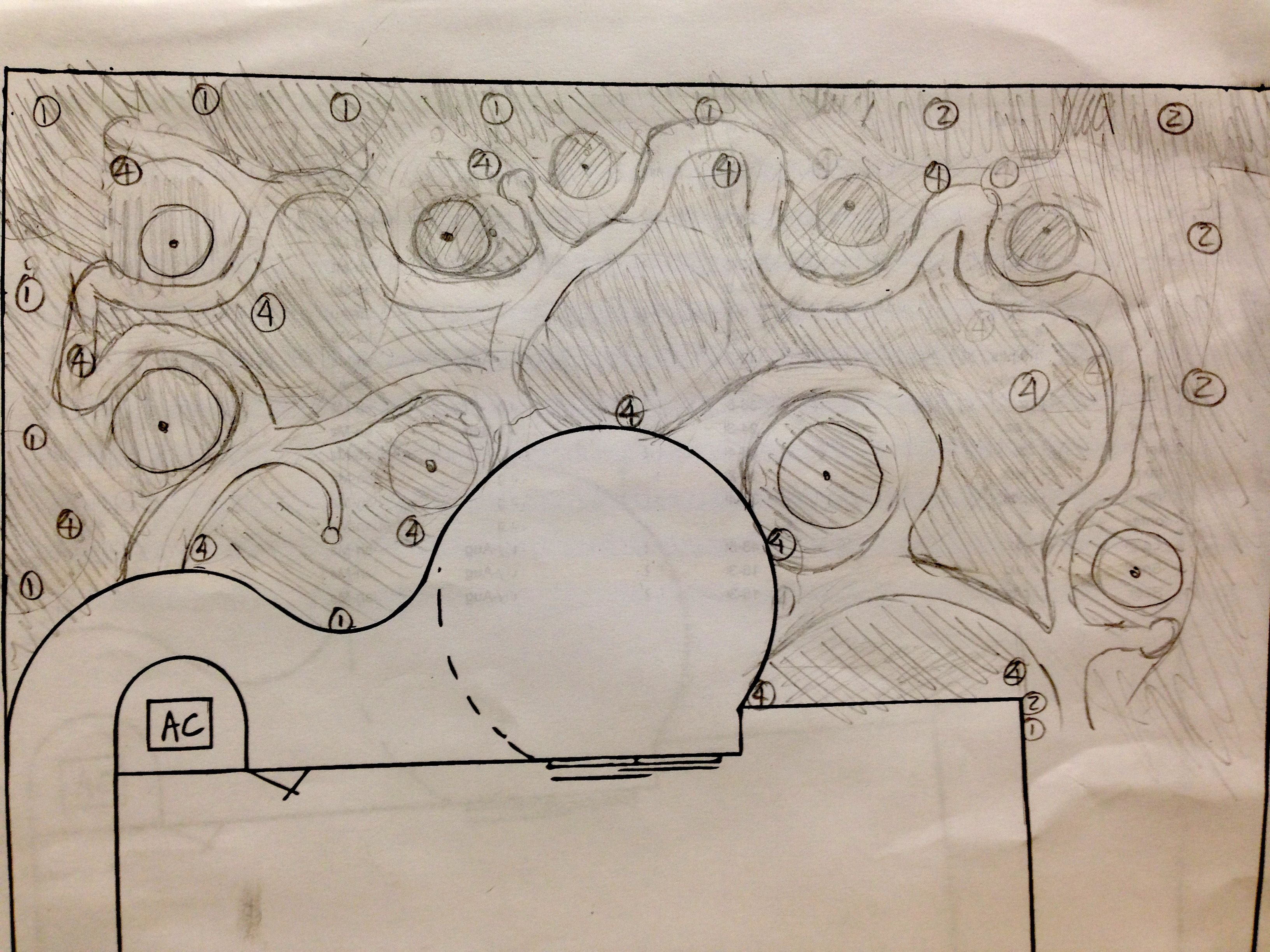
The pathway would meander throughout the whole yard and make a big loop. There would be no straight edges for aesthetics and increased edge and ideally the fruit trees and veggies in the middle of any veggie bed could be reached from the paths.
Later on and halfway through this crazy garden transition the HOA demanded that I submit a request for landscaping. Apparently a neighbor complained on me for all the digging in my backyard and other "unsightly" things. Ugh HOA's, don't get me started. The good news is it was an opportunity to make a formal design and my freedom to continue the project was approved.

I began gathering free wood from craigslist
The wood was put in contact with the garden soil to create microclimates and habitat for insects and worms, as well as aesthetic beauty. In retrospect it's incredible to me how rare a resource wood is in suburbia and yet people are giving it away for free!
I picked up municipal compost and woodchips by the carload, dozens of times.
I didn't have a truck but that didn't stop me. I brought trash cans which were filled by the front loader and then I hoisted them in my SUV!
Then I began sheet mulching with thick layers of cardboard to block the bermuda grass from coming up.
Half out of laziness and half out of practicality I decided to sheet mulch over the grass rather than digging it up. I knew the grass would decompose and be good organic matter. I started on one side of the yard and as the weeks went by the edge of the sheet mulching moved across the yard.
The pathways went in first, covered by woodchips.

I dug a trench down the middle of the yard where I created a hugelkulter channel.
I buried logs, scrap wood, rose prunings, cotton rags, hair, food scraps and other organic matter in the channel which would all decompose and create rich soil, moisture retention, habitat for soil life and channels for fruit tree roots to run and pick up moisture and nutrients.
Since the climate in Southern California is quite hot and dry I didn't want my hugelkulter raised. I wanted it buried deep under the clay soil and garden soil so that the moisture would not get dehydrated away easily.
The clay soil that I scooped out of the trench went under pathways, raising them up to create deeper veggie beds and allow excess moisture in a large rainfall to run down from the paths and be wicked up by the veggie beds and hugel channel.
I continued sheet mulching the grass with cheap municipal compost. Later I learned about sources of free mushroom compost from local organic mushroom growers and while it was a significantly further drive I favored that over the municipal compost.
If I had to do the sheet mulching over again I would have put more effort into finding more types of sources of organic matter like manure and more leaves for diverse textures, nutrients and moisture retaining qualities. But I have to say with the limited time and resources I did have, it turned out "good enough" for amazing results.
Finally I started seeding the new beds!
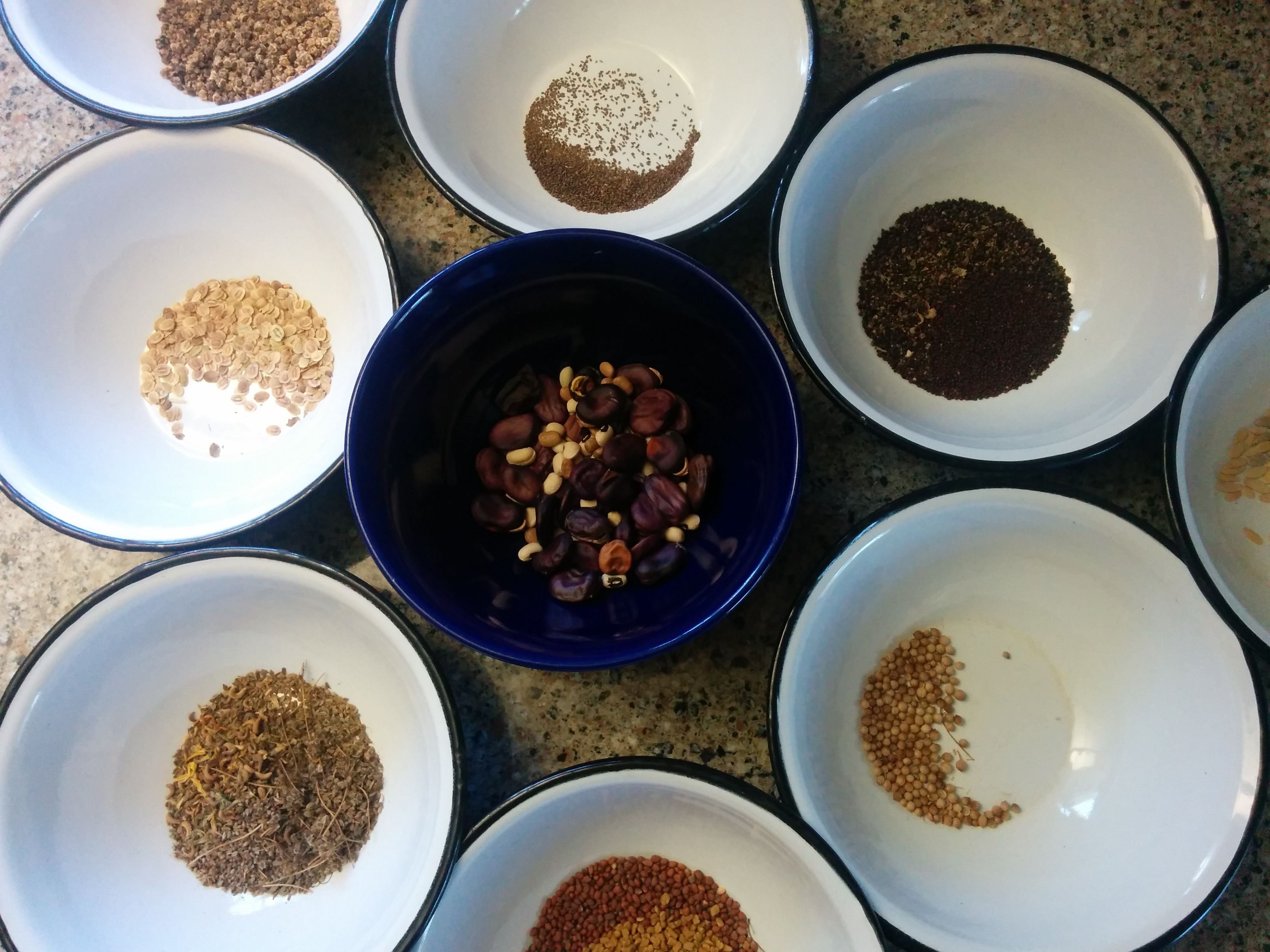
My approach was to get as much of the ground covered as possible with plant life ASAP
I had over 40 type of veggie seeds and I put them in bowls sorted by seed type and size and went out and scattered them all over the compost and raked them in lightly.
I was going to let nature decide what would grow where. With a little patience and some watering the seeds started sprouting!
And growing!
It is the most incredible experience to see the bare soil start to be dotted with green and that green getting bigger and bigger as they grow for the light.
Until finally there is hardly any soil to be seen.
The garden sheet mulching and seeding was happening in stages. So while the earlier seedings were beginning to fill in, other portions of the yard were still just starting to take shape.

To be honest there was a good portion of time where there was a lot of bare soil with little sprouted seedlings sparsely scattered around that I was nursing along with compost tea. Bare soil was due in combination to hot microclimates, new compost without soil life, and seasonality.
I started to see the bare soil as opportunities for planting new veggies, native shrubs, rocks, stumps and other ways of creating microclimates and habitat. As the other side of the yard was filling up with life more and more the necessity for pruning and thinning started becoming greater and greater.
This became a chop and drop opportunity.
Much of the vigorous growth from one side of the garden was chopped down and dropped around the other side of the garden and in places where there was bare soil to act as mulch, moisture retention, organic matter and habitat.
I also brought in lots of dropped leaves from friends and gardeners that I met that were about to drop off a bunch of leaves to the dump. I placed the leaves around plants on the bare soil.
Keep the organic matter flowing!
At least once a week I stopped by starbucks and picked up free used coffee grounds (with filters) by the 5 gallon bucket full and spread them around on the soil and in my compost bins layered with veggies and other organic material.
I also got free old hay from a garden I was volunteering for. Apparently it was too old looking for them (go figure), but not for me! I loaded it in my SUV and spread it around the plants.
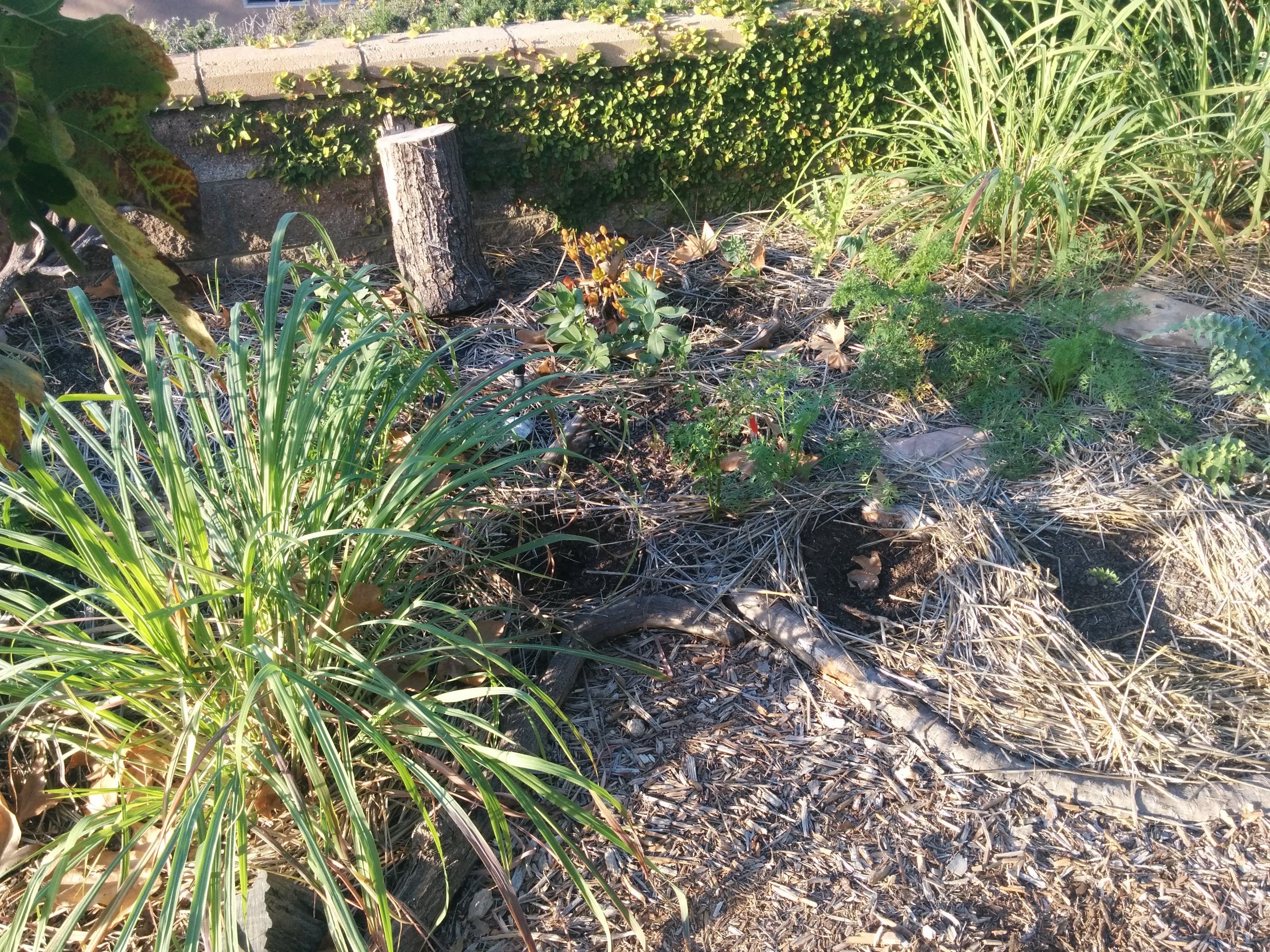
Pretty soon most of the bare soil had been covered by mulch and plants were continuing to provide extra leave matter and stems that could be chopped and dropped.
I continued to add layers of dried leaves, prunings from the veggies and prunings from shrubs that continued to produce, plus coffee grounds, compost from my piles that were starting to produce and other organic matter. Soil was slowly starting to come to life and it was apparent in the plants leaves that were turning more green and less yellow.
Meanwhile the original veggie beds that had stunted, small, yellow veggies in the beginning that weren't doing anything. Now they were coming to life. The applications of compost tea, mulch and compost were paying off.
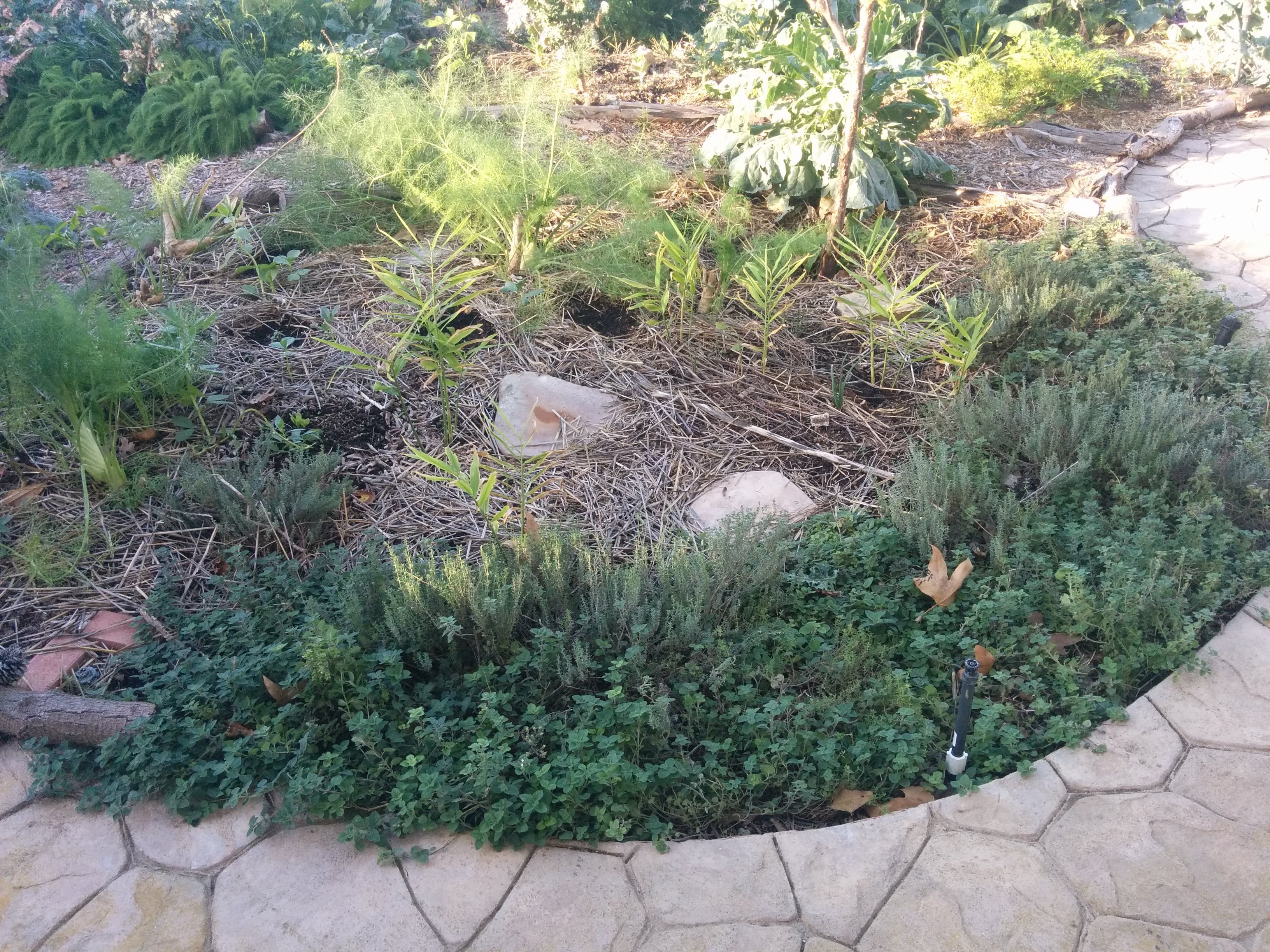
Herbs had really taken off. I am in awe of the power of growing perennial herbs like thyme, oregano, marjoram and savory that quickly fill in areas and spread and reseed creating effective ground cover.
I also used one of the original veggie beds to plant potatoes and sweet potatoes and those plants were taking off!

The other huge observation and learning experience for me was the power of edge.
I noticed that at the edges of any strong, healthy growth and soil life, that abundance of life was shared with the plants around it. That health and vigor slowly moved outward. With patience and concentrated effort on supporting the life in the garden and soil, that continued to pay it forward by spreading outward toward other areas of the garden.
It's a relatively slow but also quick process where this migration of life and energy can be "seen" within a month or a few months.
Over a season it is incredible to see life force move from one side of the yard to the other. And there I discovered that life supports and encourages itself and in the right conditions nature is always ready to provide abundance.
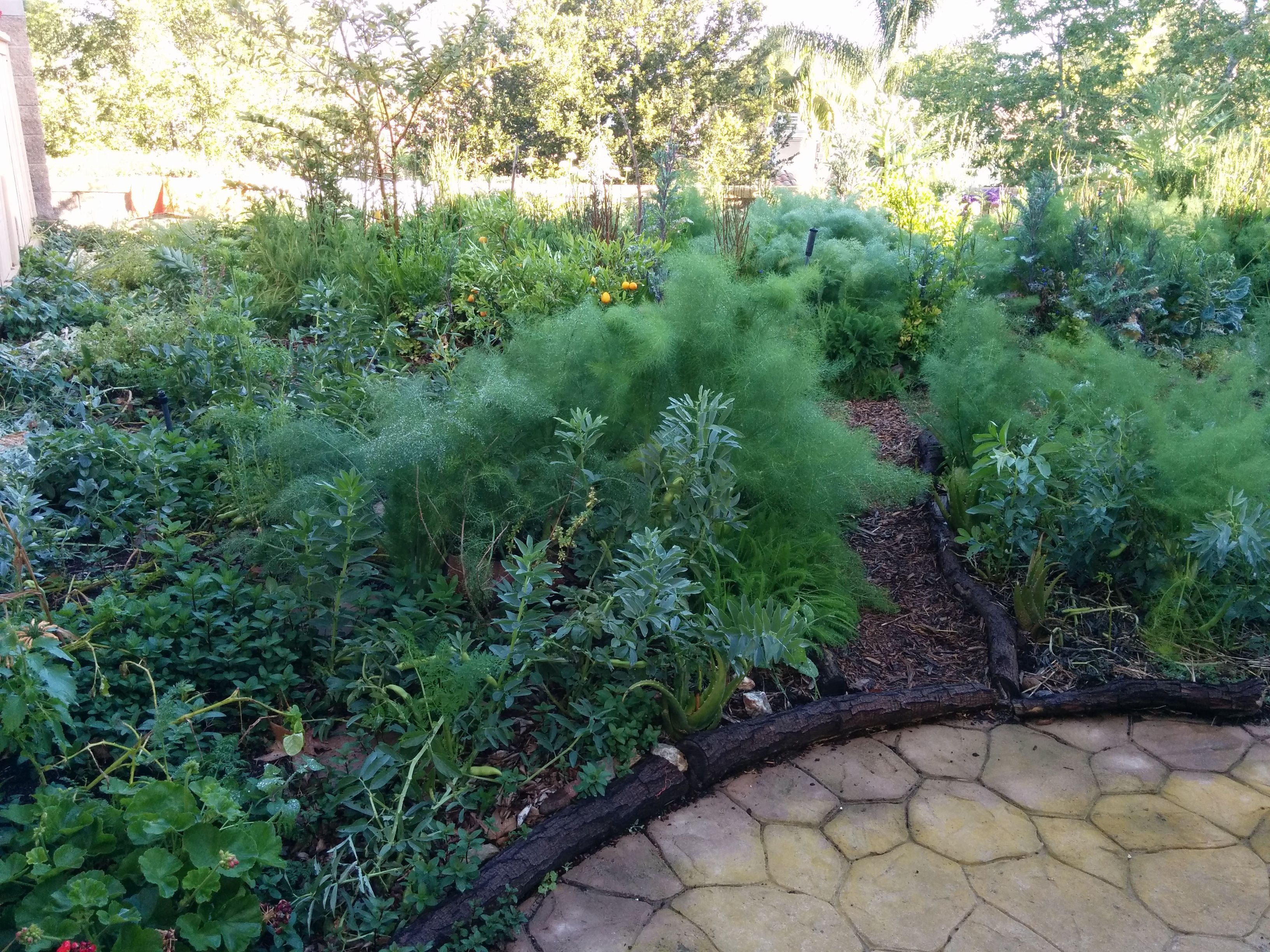
Thank you for joining me in my garden!
This garden really was/is so dear to my heart. I would like to extend the tour in a few following posts where I will share many more photos of nature's abundance in this suburban garden, as well as some more key lessons learned and knowledge gleaned from this garden.
Let's go! Join me here for the 2nd part of this suburban garden tour.
You can also join my 1st suburban garden tour here: Part 1, Part 2, Part 3, Part 4
